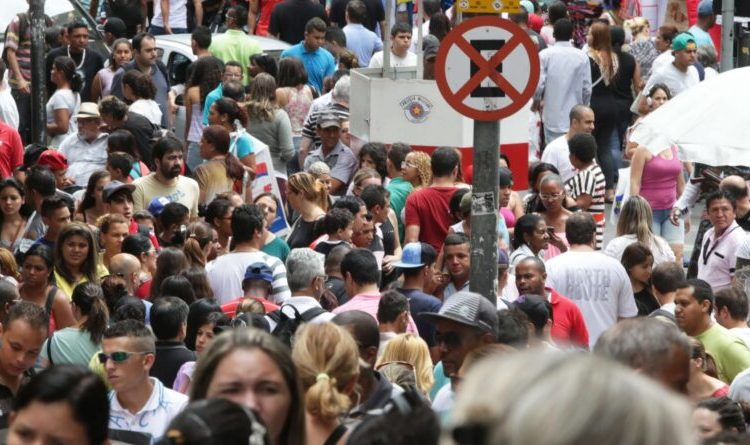The Brazilian Institute of Geography and Statistics (IBGE) has periodically published findings from the 2022 Census. The population count flagged the fast and steep aging of the Brazilian population, and new projections from the IBGE now show just how steep this process is.
According to the new calculations, which factor in indicators such as fertility rate (number of births per woman), life expectancy, and migration, the Brazilian population will increase from the current 203 million inhabitants to 220 million in 2041 — when it will begin shrinking, falling to 199.2 million by 2070.
That inflection point is expected to occur six years earlier than IBGE’s 2018 projections had estimated.
The primary driver behind this anticipated population decline is a significant drop in fertility rates. Between 2000 and 2023, the number of births per woman declined from 2.32 to 1.57.
The replacement rate, the fertility level needed for a population to replace itself from one generation to the next, stands at 2.1 births per woman.
In line with trends observed in developed countries, Brazilian families are choosing to have fewer children. The number of births dropped from 3.6 million in 2000 to 2.6 million in 2020. Women are also having children later in their lives — from an average age of 25.3 in 2000 to 27.7 in 2020, and an expected 31.3 by 2070.
The proportion of Brazilians aged 65 or older has also been increasing faster than expected: from 7.4 percent in 2010 to 10.9 percent in 2022. IBGE data shows that this increase in the elderly population coincides with a decrease in the share of people aged 14 and under (from 24.1 to 19.8 percent).
As a result, the Brazilian age pyramid, which had already lost its sharp triangular shape in the early 2000s, continues to narrow. Despite the slight pause in the life expectancy growth trend caused by the Covid pandemic, the new projections indicate that Brazilians will live longer and longer, with the rate rising from the current 72.1 years for men and 78.8 years for women to 81.7 years and 86.1 years in 2070, respectively.
As we have already shown, this aging process enhances pressure on Brazil’s health and pension systems. Brazil reformed its pension system in 2019 and will probably have to do it again soon — not just to address retirement parameters, but also to rethink the financing model of the system itself.
Source: brazilian

